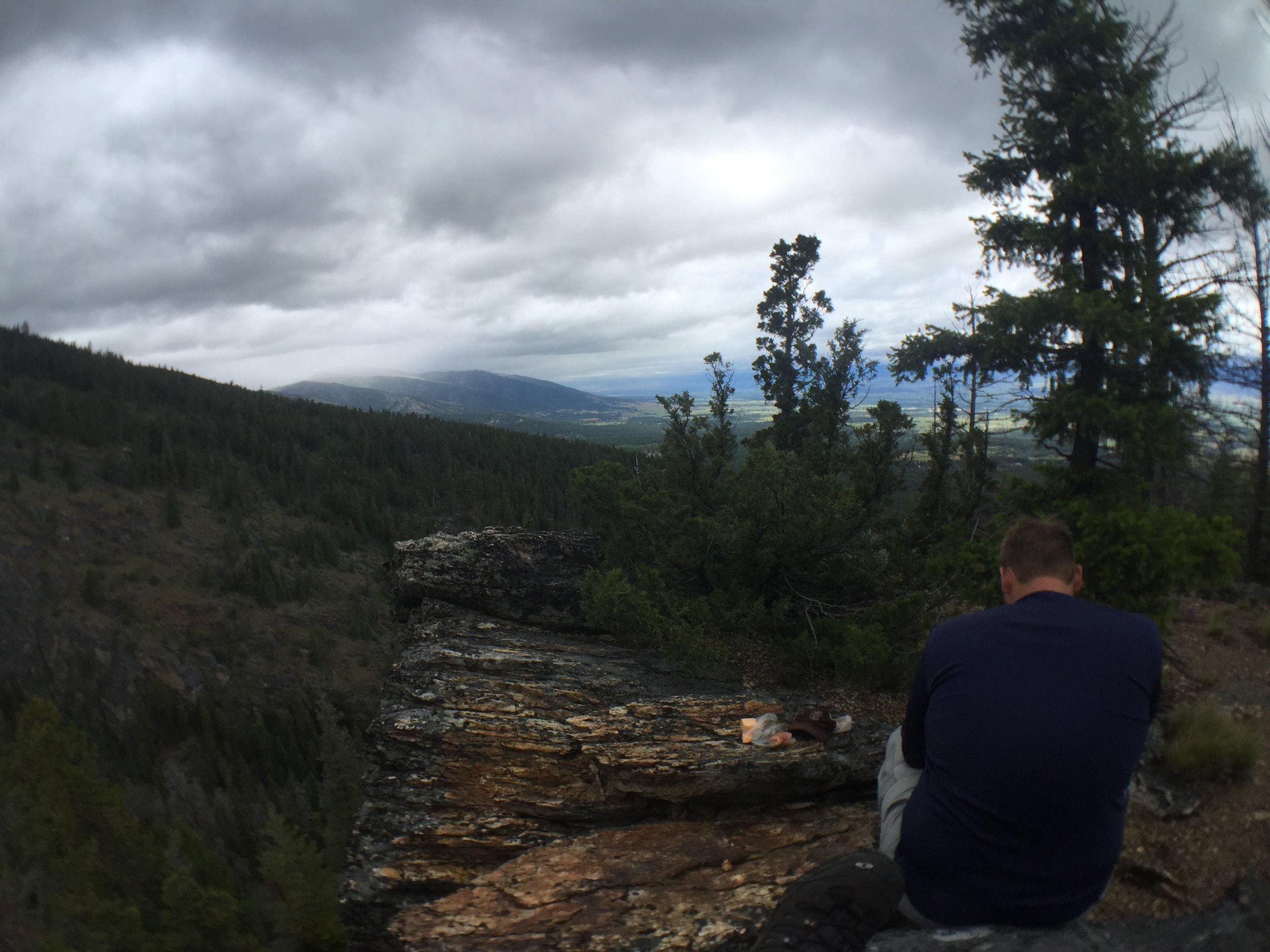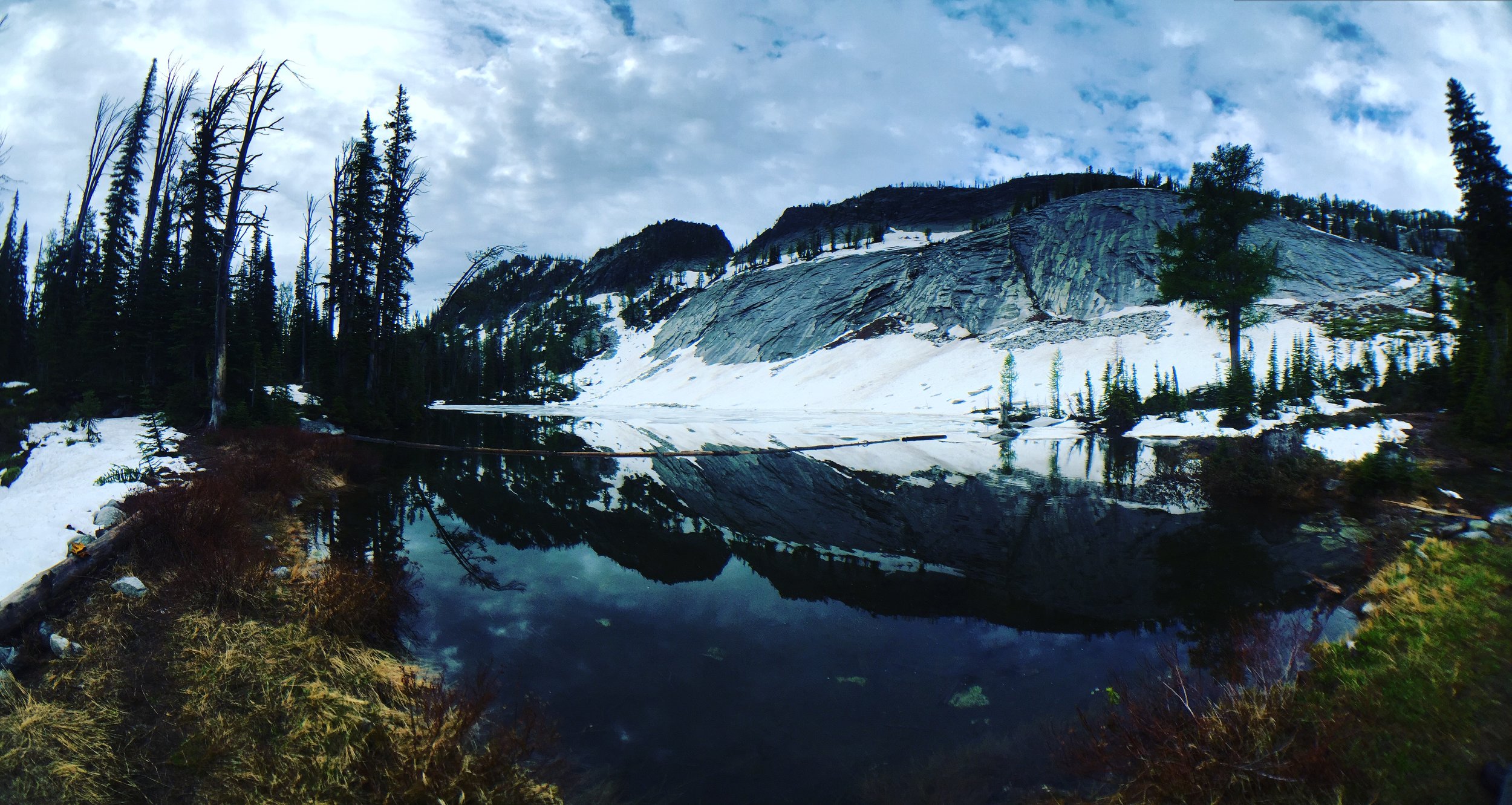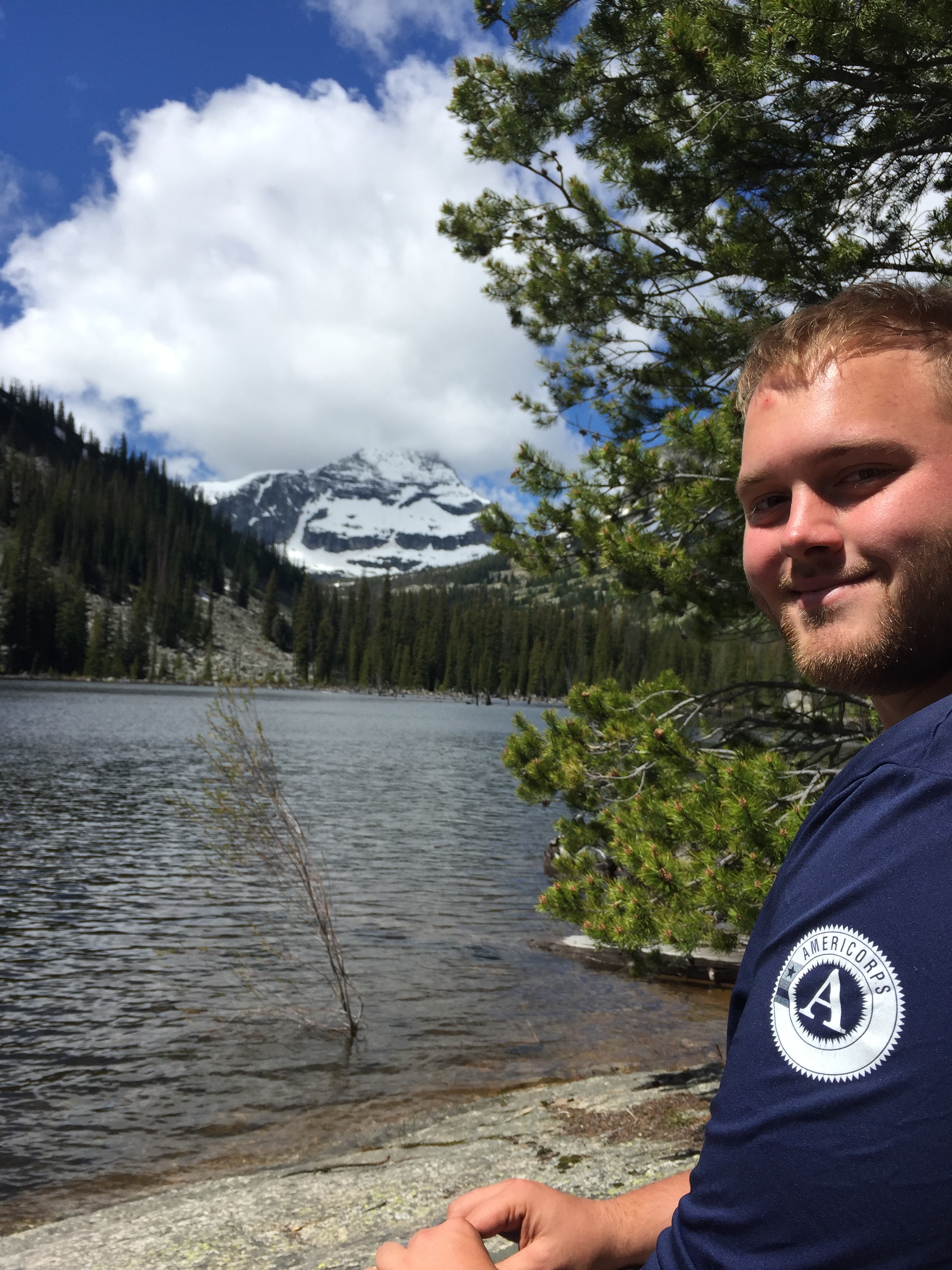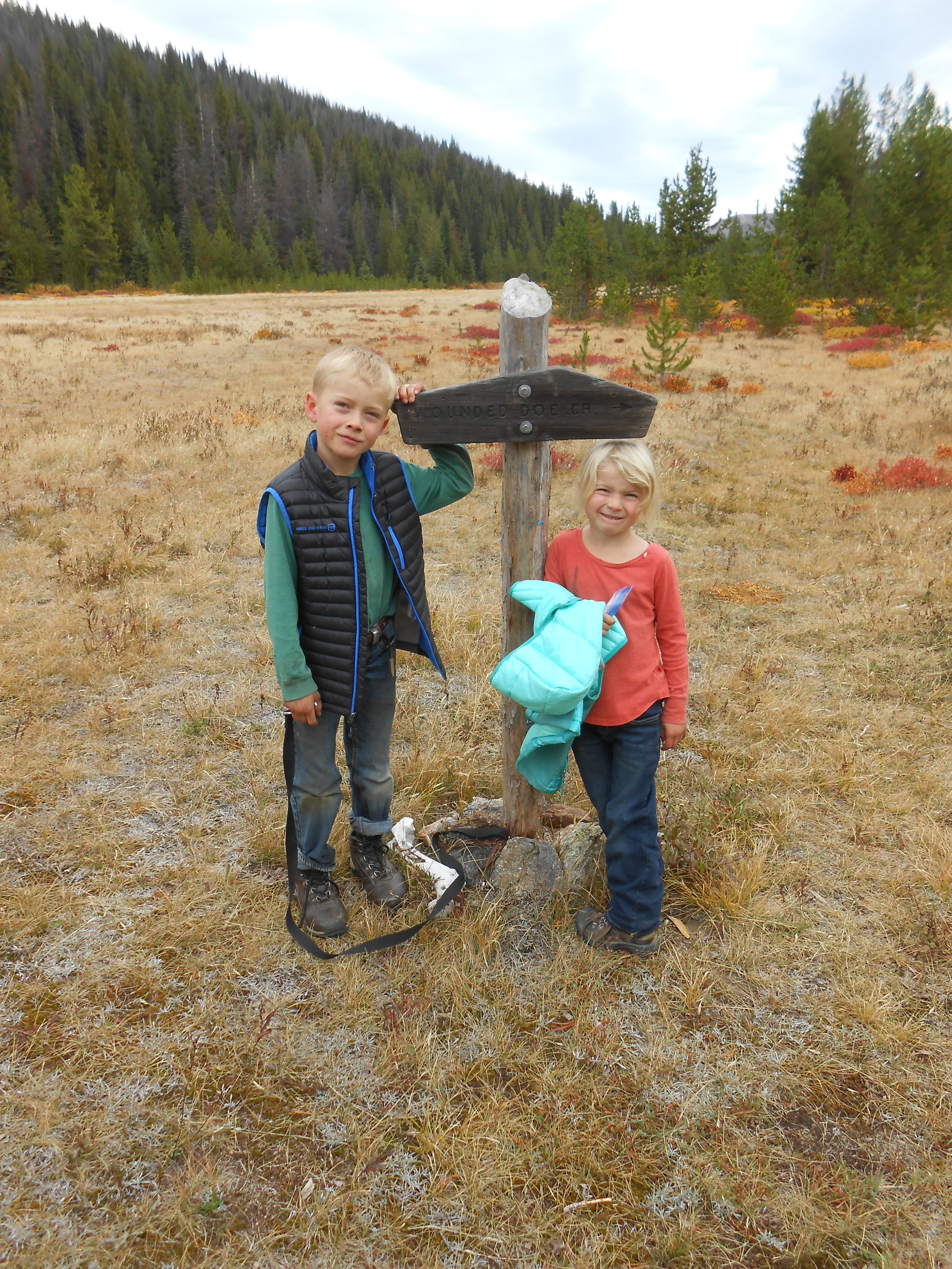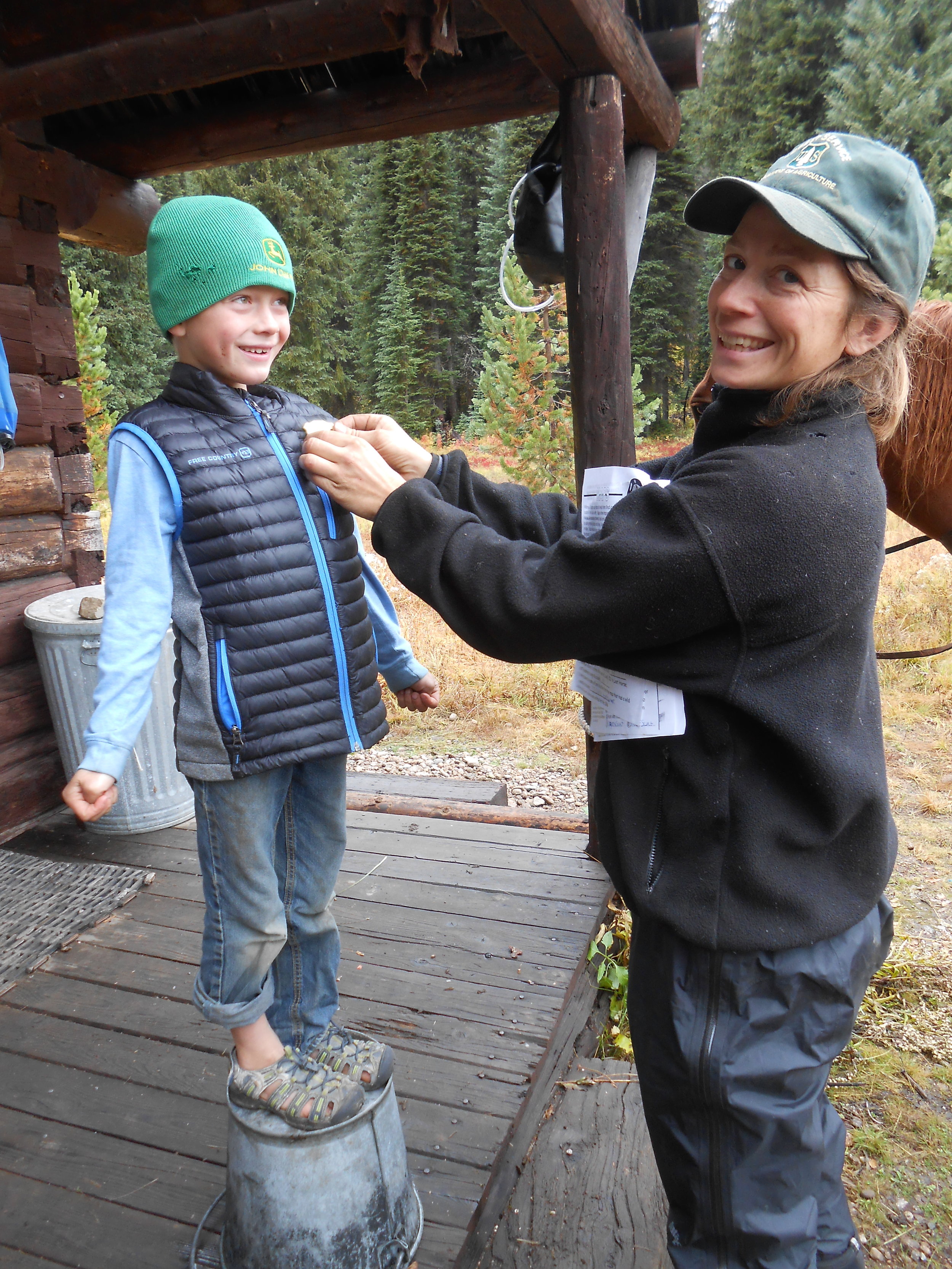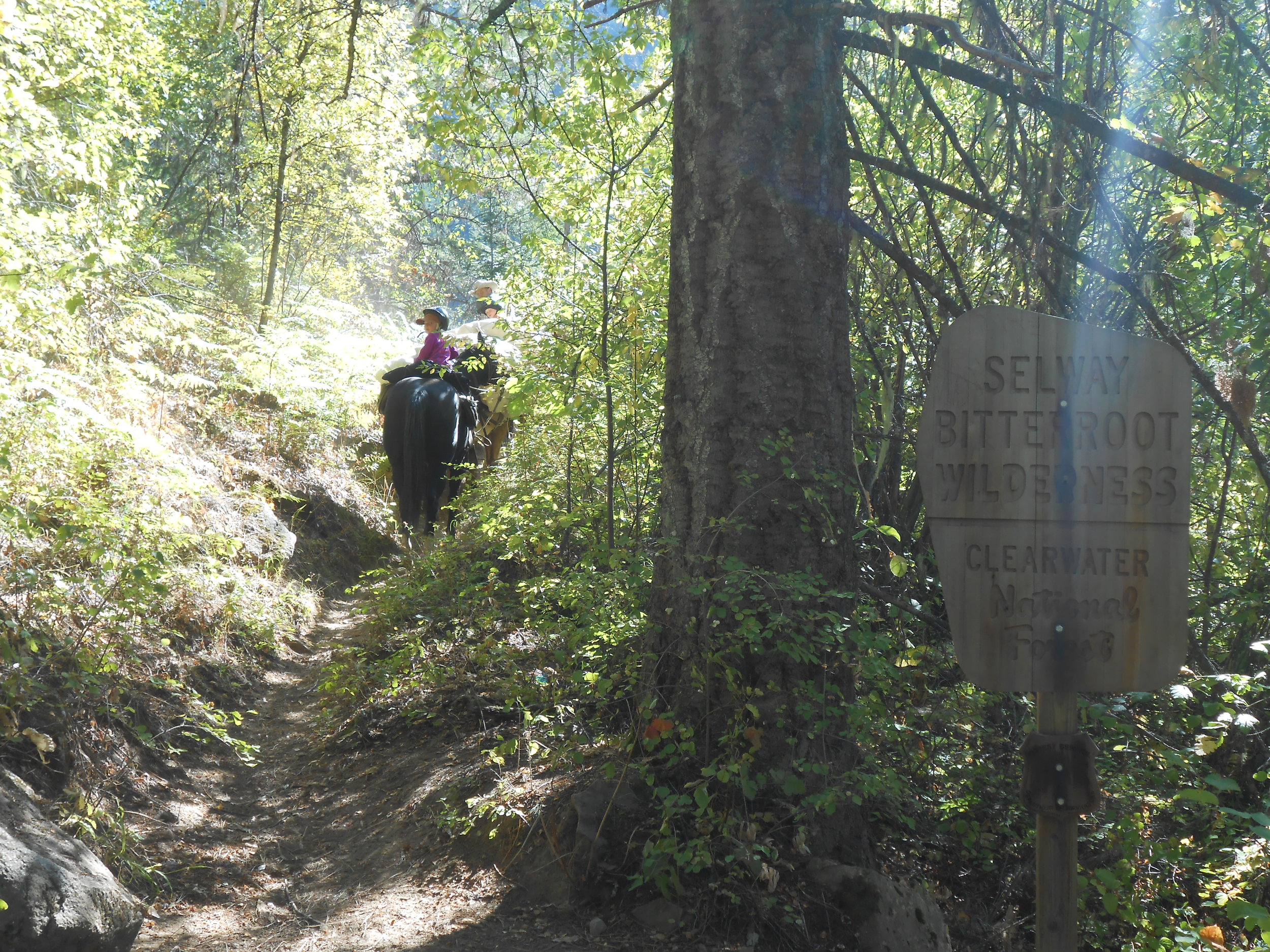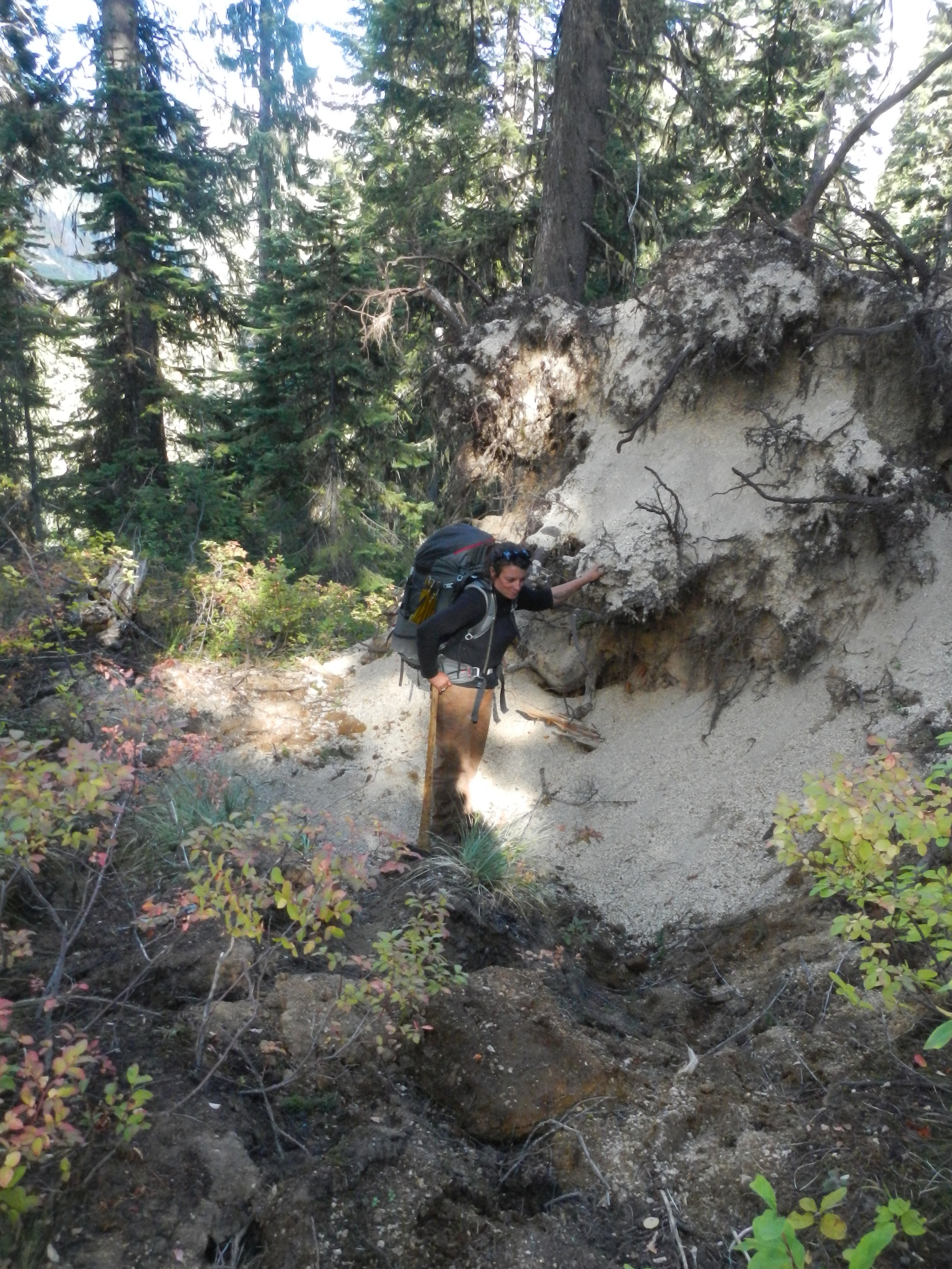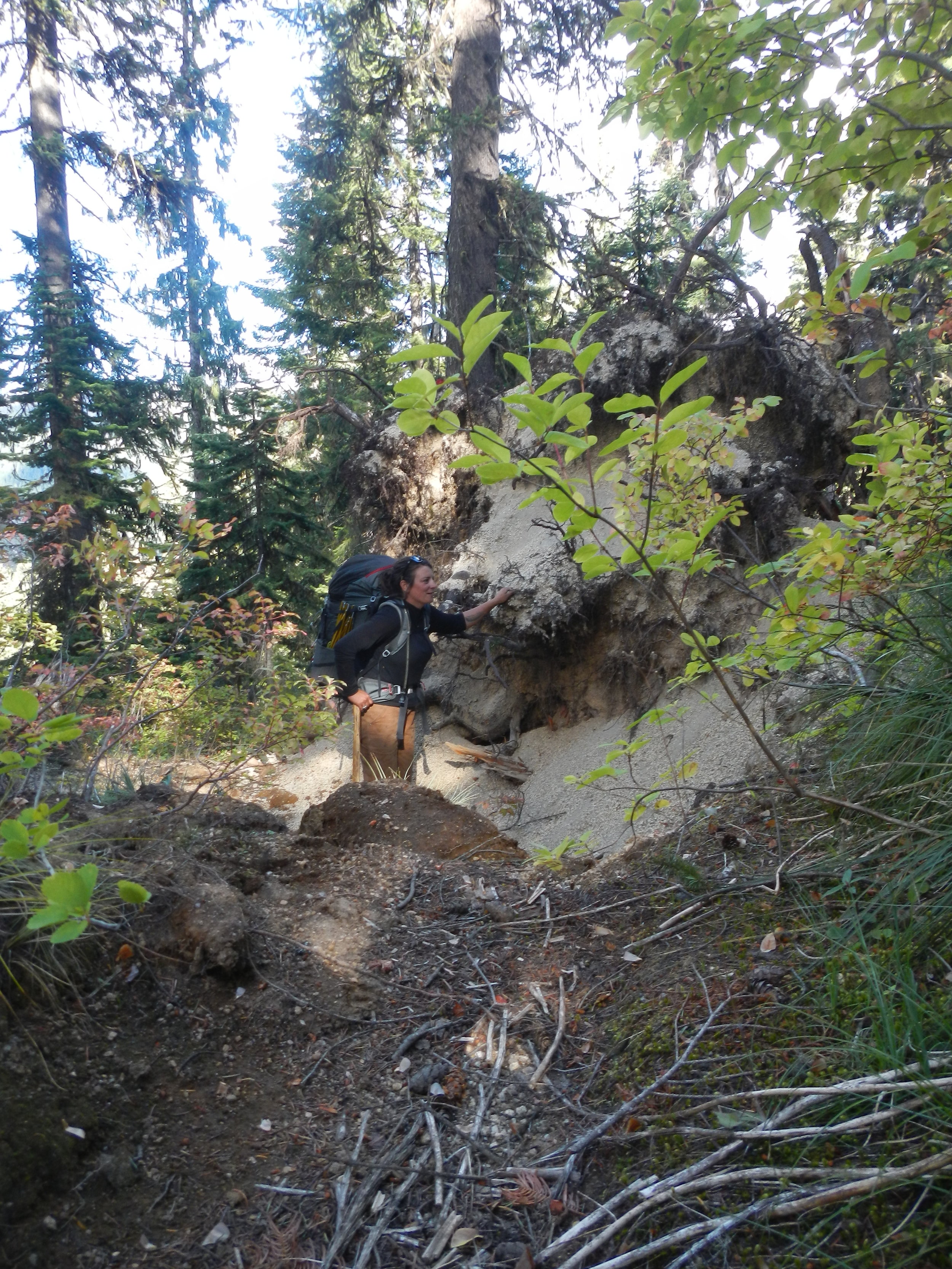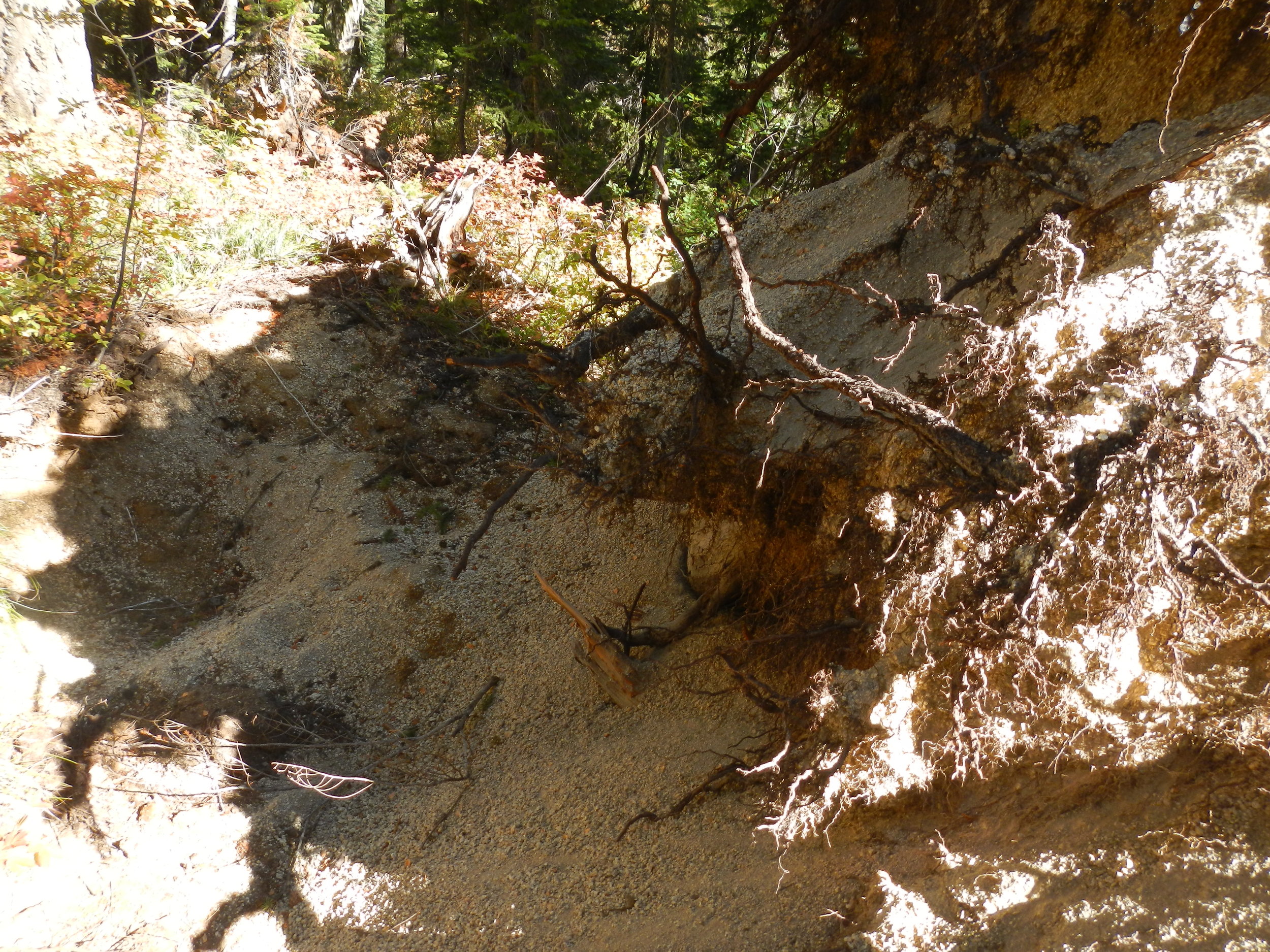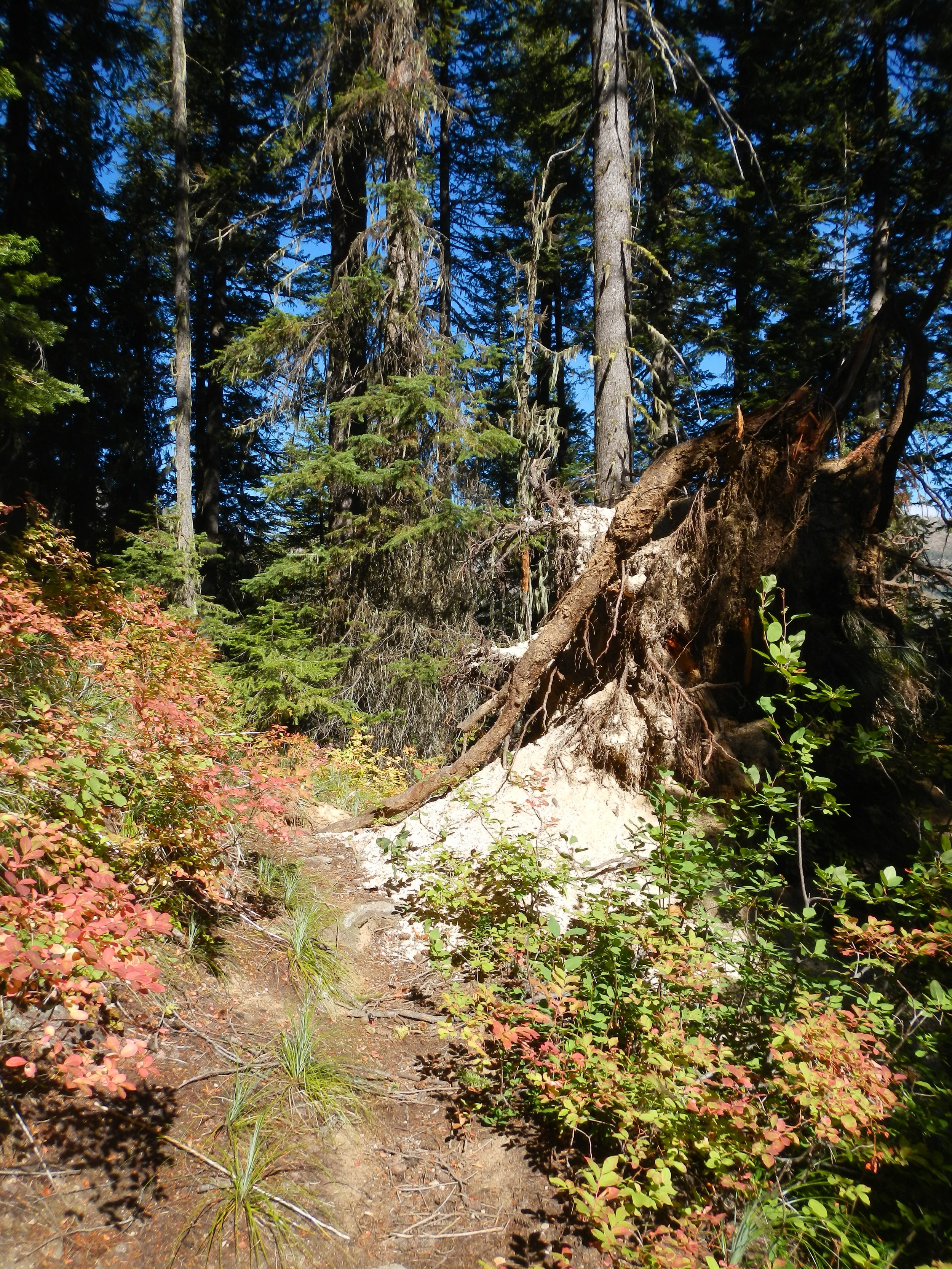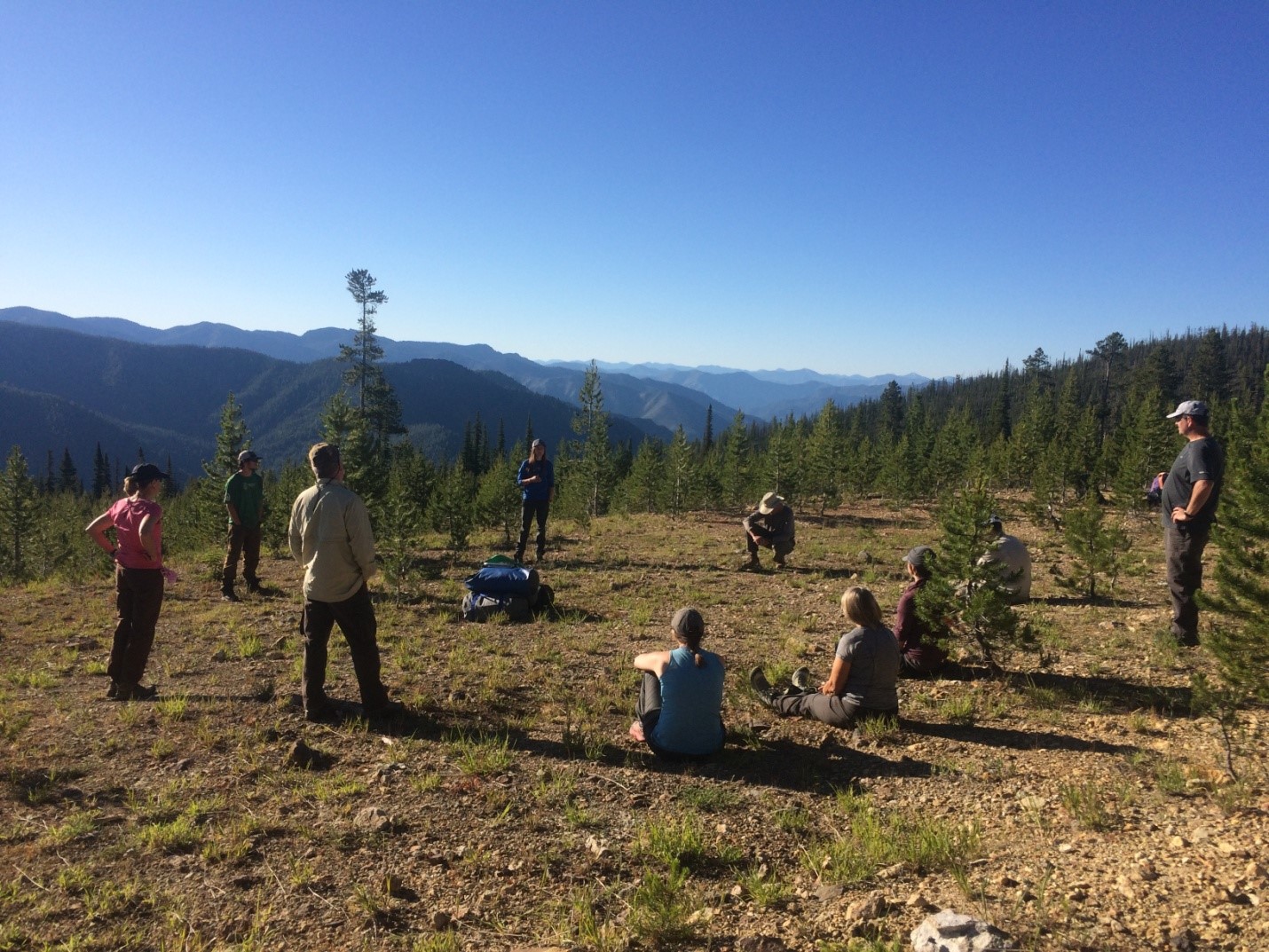Heather Morris – Wilderness Ranger Intern
State University of New York
Seven Lakes Hitch
July 11-16
Nez Perce-Clearwater National Forest
Coming from New Jersey I had no idea what to expect stepping off the plane in the “new world” that was Montana. I was nervous and excited for our upcoming training, meeting new people, and for the first time ever: backpacking. I honestly considered turning around a few times and going home and even wishing I had turned down this position. Overall, I am incredibly thankful I didn't. This past hitch was one of the most amazing times I've had this summer and probably going to be one of my favorite life experiences.
This past hitch started out like any other– Silas and Will showing up at Powell to pick us up. We loaded up and headed out to drop some food off to get packed in later at Lochsa Historical Ranger Station. In a move typical of us, we realized we forgot a crosscut and some campsite inventory forms and had to turn around and go back to Powell. We finally arrived at our trailhead and headed up trail 220. This trail could be considered someone's own personal hell. The only words to describe this 4-mile stretch is up, up, and up. We finally arrived at our campsite, aka Cedar camp. Exhausted and thirsty we then proceeded to hand pump water for 30 minutes from a small trickling spring. The dinner pot was classically full to the brim and we were stuffed. Sleeping in our tents that night we got to hear the disturbingly eerie sound of a distressed elk right next to our tent and a few coyotes in the distance. Next day we decided to take a “nice stroll” and clear Huckleberry Butte. Up and up we went to the top and down, down, down we went till we finally cashed tools. Then it was the day to bump camp to the land of water; Lottie Lake. Up and down we went again until we got to Lottie lake campsite or Mosquito camp 2.0. The next few days following this trek was more of up and down hikes on ridges doing campsite monitoring and clearing trails.
There was one day that really stuck with me this trip ( besides the almost painful 10 mile in 5 hours with heavy packs all the way down 2210 and boulder creek) was the day of water sampling. Forest Ranger Erika VanHavel (Treadnado) and I, started out on an 11 mile day up over one ridge to see a few alpine lakes then up again to Stanley Butte. We were about 7,000 ft up looking out on a 360 degree panorama view that included Shasta lake, the Crags, Rhoda point covered in smoke, and surrounding peaks. It was incredible. The hike up included really nice trail work, scenic views the entire time, and blooming alpine flowers. Standing up there is when I finally realized that even though the up makes you want to throw up and the down feels like your knees are screaming, I love being out here. I love feeling myself getting stronger and getting used to the pack. Since I compete in woodsman sports back in college I am now able to understand how woodsmen really originated and what it used to be. This has given me such a different view on the sport. Everything about backpacking is so rewarding. Some fond memories include laughing with Erika about failed elk bugle sounds, riding a horse around camp, bringing a scientific vessel (Walmart floaty) to do water sampling, Even the not so fond memories are worth it that included getting bitten by clouds of mosquitos and all the other “not shown on tumblr” events which are rewarded by great laughs and memories and beautiful sceneries all around. The fresh air, the beautiful views, and the being able to find yourself through the challenges is worth every minute of pain. This hitch is so hard to put in words but this was one of the best experiences I've ever had and challenged myself to do.
"This hitch is so hard to put in words but this was one of the best experiences I've ever had and challenged myself to do."



